San Francisco — Oct 11, 2019
Between Marrakesh and San Francisco
In San Francisco, cultural ambassador and chef Mourad Lahlou preserves Moroccan philosophies through cuisine.
By Elena Valeriote
Photography by Kassie Borreson
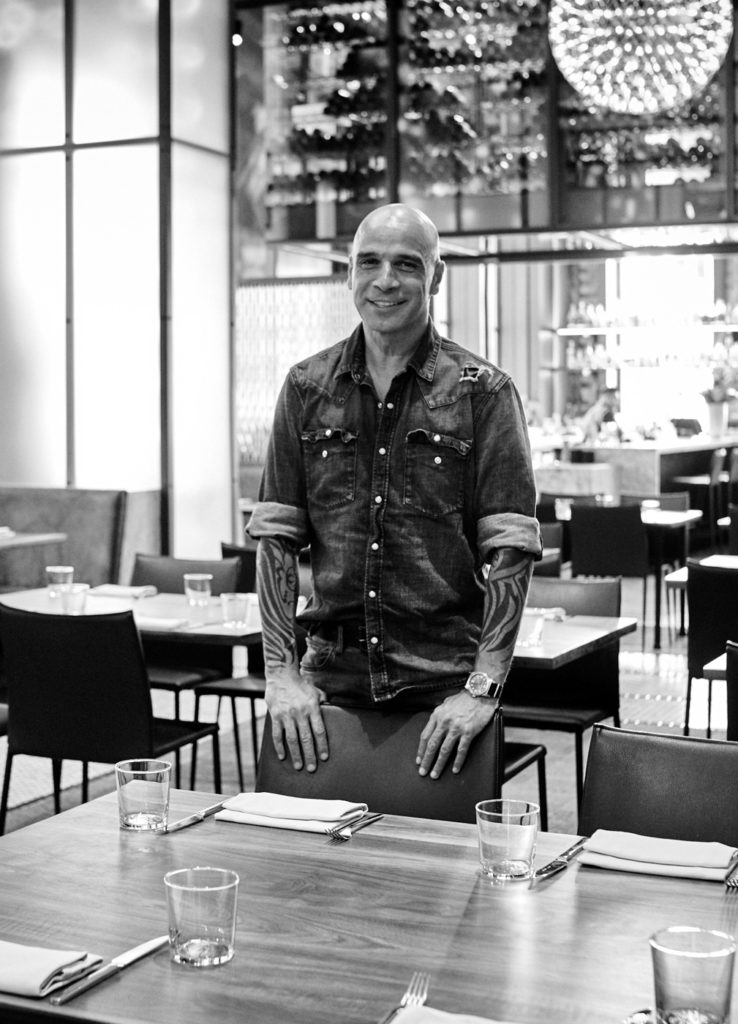
In a time when much of our food has traversed farther distances across this Earth than we have, there has been a proliferation of vocabulary used to describe locally produced foods. Conversations today on topics ranging from sustainability to terroir turn to discussions of “food miles” in America or “zero kilometer” products in Europe. But in Morocco, terminology with attention to place of origin has a longer history and more ingrained cultural value.
For Moroccans, local food products are called beldi, in opposition to their rumi (non-local) counterparts. The distinction seems simple at first, but ethnographer Katherina Graf of the SOAS University of London has devoted years to understanding the infinite nuances of these two terms during the course of her PhD and professional research on Moroccan food culture. “In Morocco, and across the Arab world, ‘beldi’ literally means ‘from/of the country,’” she says. “But it can also mean traditional, local, regional, homemade, hand-grown, or simply wholesome.” Rumi, on the other hand, is attributed to anything that is foreign to Morocco.
This practice of differentiating between native and nonnative foods in Morocco precedes the American local food movement of the seventies by hundreds, if not thousands of years, and became especially relevant from 1912 to 1956 while Morocco was a protectorate of France. During this period in Morocco, indigenous, artisanal products were replaced by imported, industrial ones. As a result, the value of beldi products grew to be highly valued amongst Moroccans.
Considering the concept of beldi within the context of Moroccan history, it’s essential to understanding Moroccan cuisine as it is prepared both inside and outside of the country. It is not surprising that this word also found its way into my conversation with Mourad Lahlou, one of the world’s foremost authorities on Moroccan food.
Lahlou left his home in Marrakesh, Morocco, in 1986 and moved to San Francisco where he left the field of economics to pursue a career as a chef and owner of several restaurants. Currently, Lahlou’s energy is focused on his San Francisco-based, Michelin-starred restaurant, Mourad, in SoMa.

Lahlou’s cross-cultural upbringing is fundamental in developing his interpretation of Moroccan cuisine as it is presented at Mourad. When I ask what is lost and what is gained as he balances the deep-rooted traditions of Moroccan cuisine with the innovative culture of the Bay Area, Lahlou expresses his excitement at the chance to evolve Moroccan cuisine. He then adds that this departure from tradition is also its greatest loss. Lahlou goes on to explain that in adapting Moroccan cuisine, “You mess with something sacred—with a technique or dish that has been served over thousands of years. There is something to say for that. But to me, food has to have a sense of place. It didn’t make sense for me to make Moroccan food smack in the middle of the Bay Area and not be using the ingredients that are available to me here.”
Lahlou has been unapologetic and enthusiastic about creating his own take on Moroccan food accented by Californian influences and any other international cuisines that inspire him. His unique approach materializes in Mourad’s menu, perhaps most vividly in the restaurant’s preparation of short ribs. The inspiration for the dish comes from a typical tagine of Marrakesh. According to tradition, meat is placed in an earthenware container (which, like the dish itself, is called a tagine), along with preserved lemons, ras el hanout (a North African spice mix), and smen (aged butter). The tagine is then buried in ash and cooked overnight for ten to twelve hours.
“It’s one of the most delicious dishes I’ve ever had, but we can’t do that in America, so I had to capture its essence in another way,” says Lahlou. At Mourad, Lahlou uses these same ingredients to flavor his short ribs and then cooks them for three days over low heat. “You get this completely different taste and texture in the meat that reflects what is traditional in Morocco, but looks modern because it’s medium rare and so tender,” Lahlou notes. “To me, that’s a very successful dish that captures the roots of Moroccan cuisine, but takes advantage of many years of experimenting and of evolution in cooking, not just in my kitchen, but around the world.”
It seems every aspect related to the food served at Mourad has been given this attention to detail. Each of the components of the short rib dish represent years of fine-tuning recipes, many of which are based off food preparation methods that have been practiced for centuries. Amongst these is Lahlou’s particular rendition of ras el hanout. This blend of spices can be found in several countries within the Maghreb region of Africa, including Morocco, Tunisia and Algeria, and can contain anywhere from a dozen spices to more than one hundred.
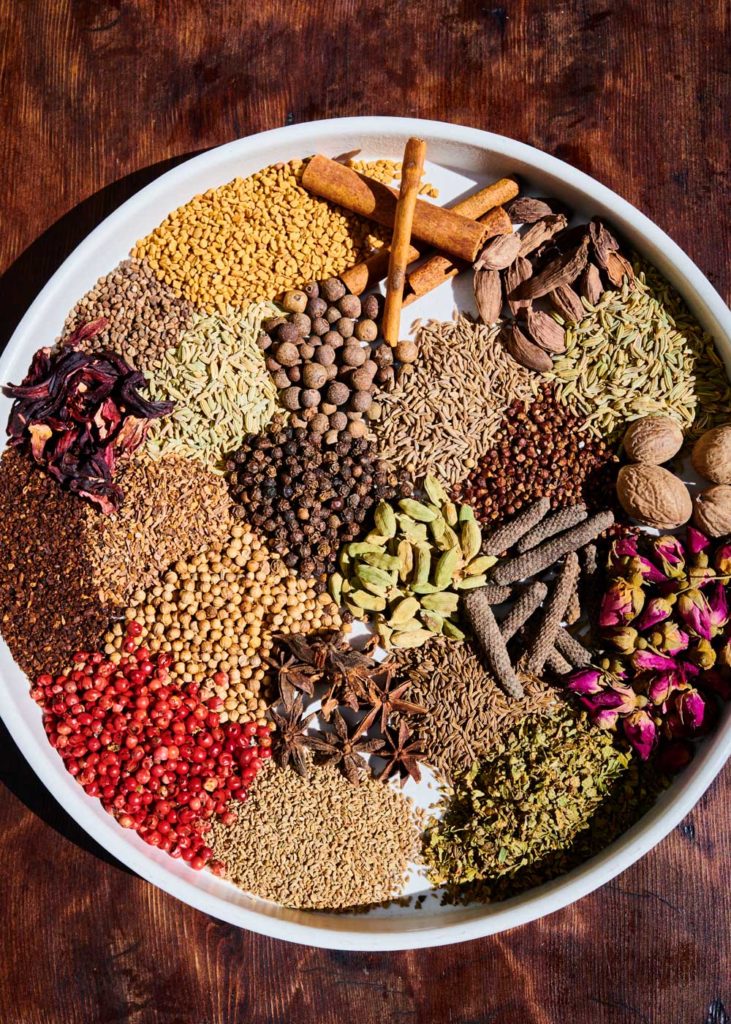
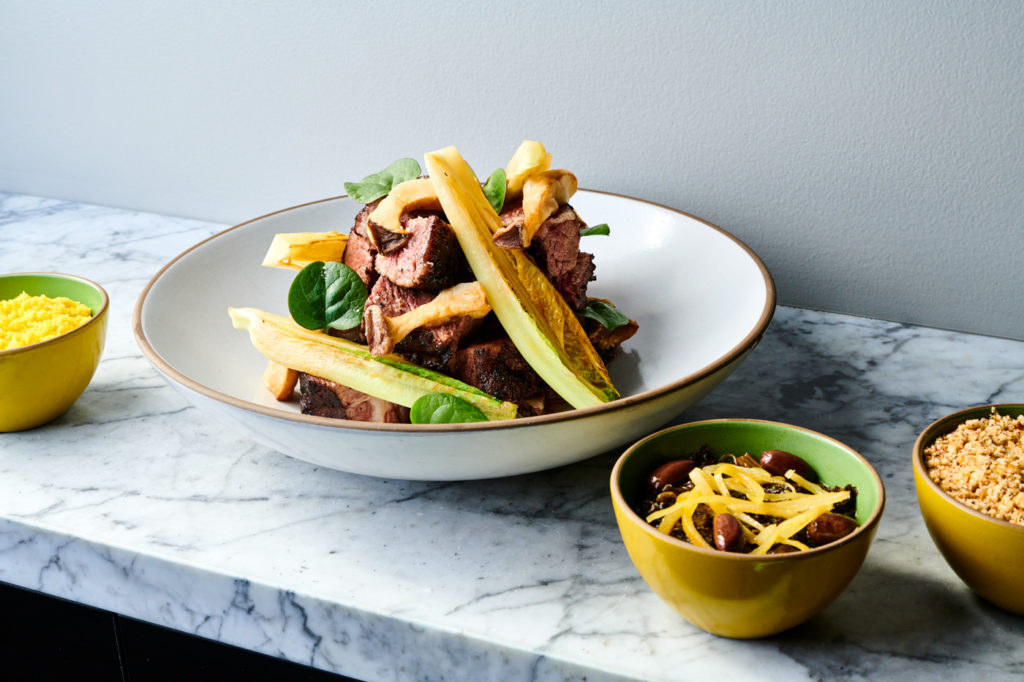
“It’s a topic in Morocco that can fuel disputes over generations,” says Lahlou. “Every family has a secret recipe.” Developing his own ras el hanout has been important to Lahlou. In his early years of trying to recreate Moroccan food abroad, he came to the conclusion that the recipe he had inherited from his family—which contained dozens of spices—needed to be scaled back. “Once you go past fourteen or sixteen ingredients, you lose some of the flavors and it becomes muddled,” he says. “You put it on anything—fish, meat, soup, porridge—and it takes over.”
In the end, he devised several variations of the recipe to complement a range of dishes. One of these recipes—which features just under two dozen flavor components—contains some spices familiar to an American audience (including a variety of seeds such as coriander, cumin and caraway), but many are more unusual such as green and black cardamom pods, dried rosebuds, and grains of paradise.
Beyond the food itself, the dining experience at Mourad also exhibits a mindful reinterpretation of Moroccan tradition. Under a section of the menu labeled la’acha, guests are given the option to select a family-style meal, choosing one main course for all the diners, presented on a large sharing platter. “They’re getting nourished from the same vessel, and that is a very powerful message of connectivity,” says Lahlou.
The idea demonstrates an unwavering respect for the sacred nature of gathering around a table; this act was fundamental in the formation of Lahlou’s early relationship with food in Morocco. He recalls feeling “horrified” upon first arriving in America, seeing people eat their meals alone in their cars or at a desk in front of a computer. Even shared dinners felt isolating in the way that each person ordered their own dish.
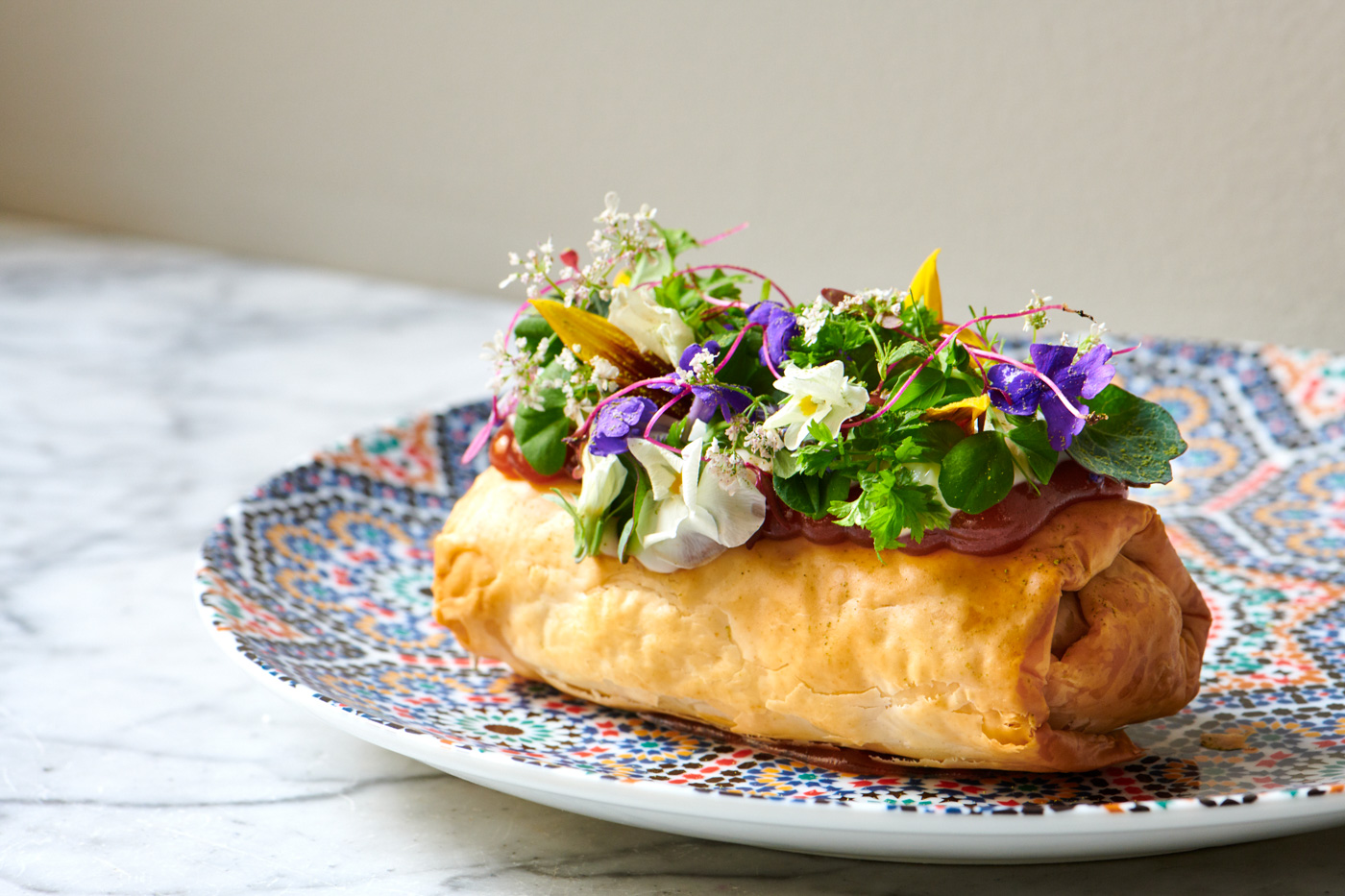
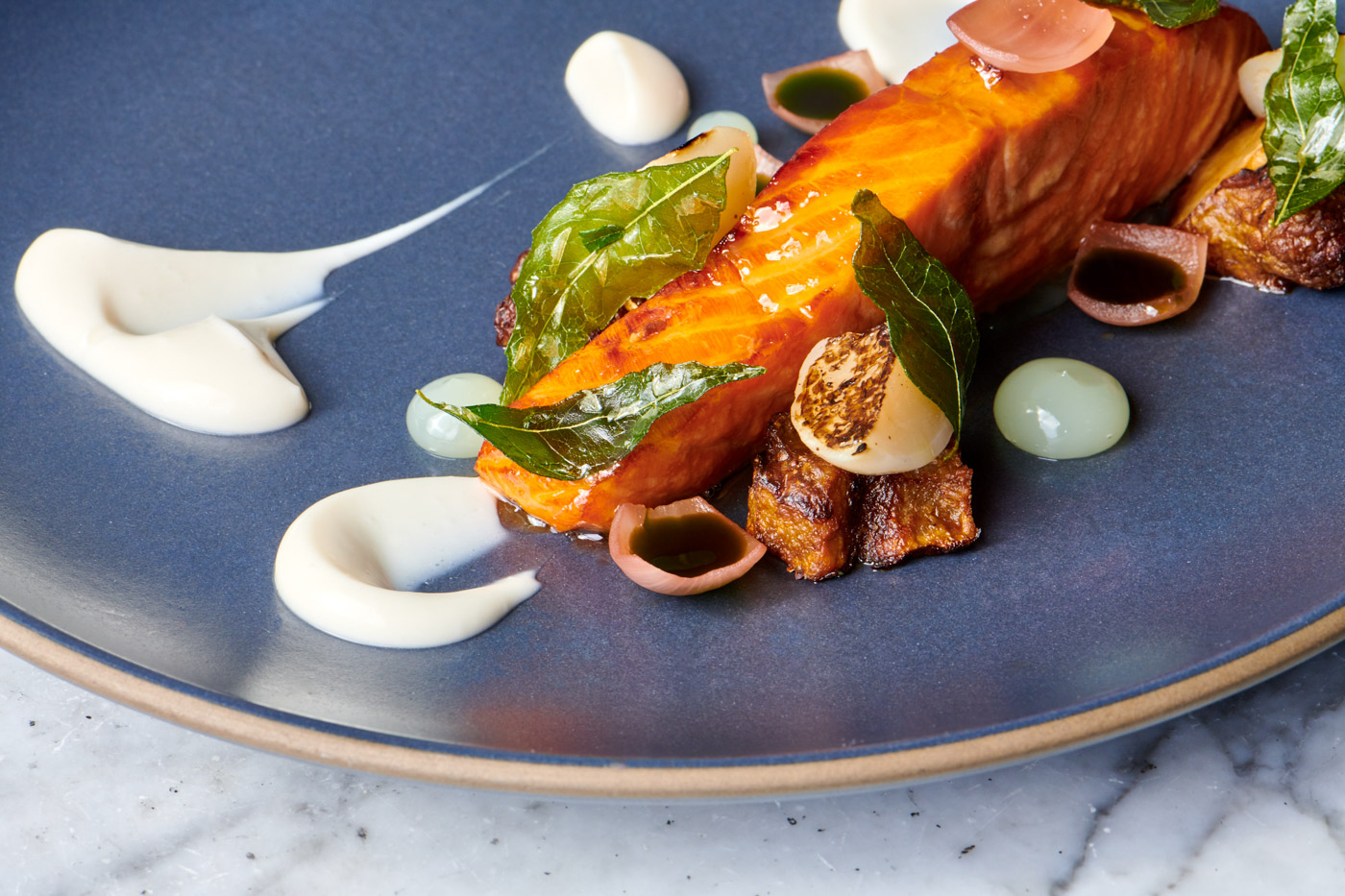
Surrounded by people who viewed food as mere fuel for survival and far from the flavors of home, Lahlou started to cook what he calls “comfort food.” “The purpose was to stay connected to my roots, my culture, my family,” he says. “I realized food was a great vehicle to do that—a way to hang on to where I came from.”
Through his own efforts to remain connected to Morocco, Lahlou has played a key role in introducing Americans to Moroccan cuisine. Outside of his work as a chef, he has also served as a Culinary Ambassador, selected by Hilary Clinton during her time as Secretary of State to cook for foreign dignitaries visiting the U.S., and appeared on a variety of popular American television series, such as Iron Chef America.
Today, Moroccan flavors can be found on menus across America and throughout the world. “It’s extremely hard for me now to go to a restaurant in the Bay Area and not come across preserved lemons,” says Lahlou. He also notes seeing a rise in the presence of couscous and ras el hanout in restaurants located in other major American cities and abroad.
The current popularity of Moroccan food is attributed to a variety of factors, including, of course, increased exposure and accessibility through the internet and television. To its own merit, both Lahlou and Graf believe the sweet and savory combinations found in Moroccan cuisine lend to its appeal. Additionally, Graf observes that Moroccan food “harbors both the exotic and the familiar in itself. It’s rooted in Mediterranean flavors and uses ingredients we know (like tomatoes, eggplants, onions and olive oil), so it speaks to our taste experience, but it also challenges it.”
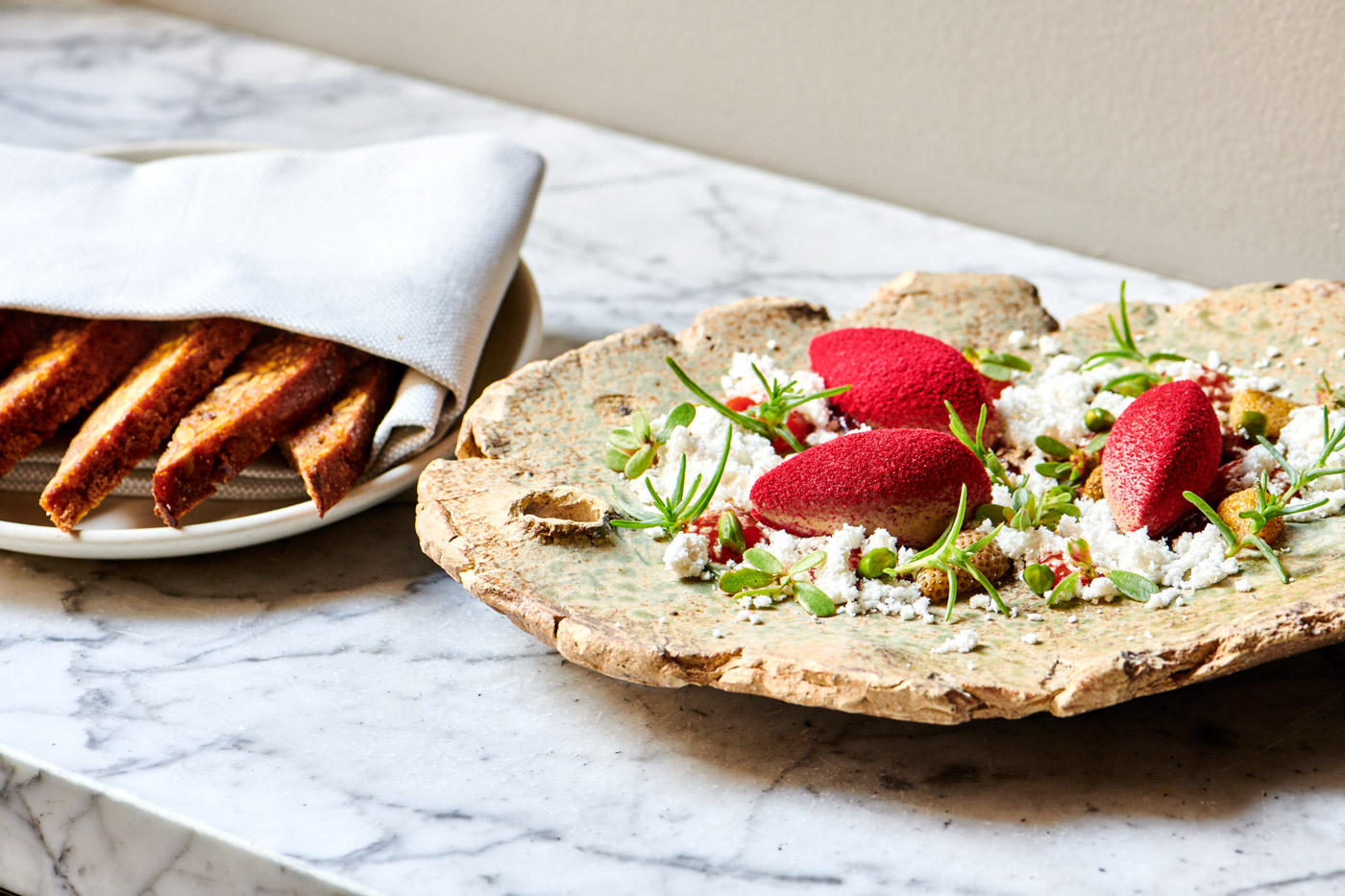
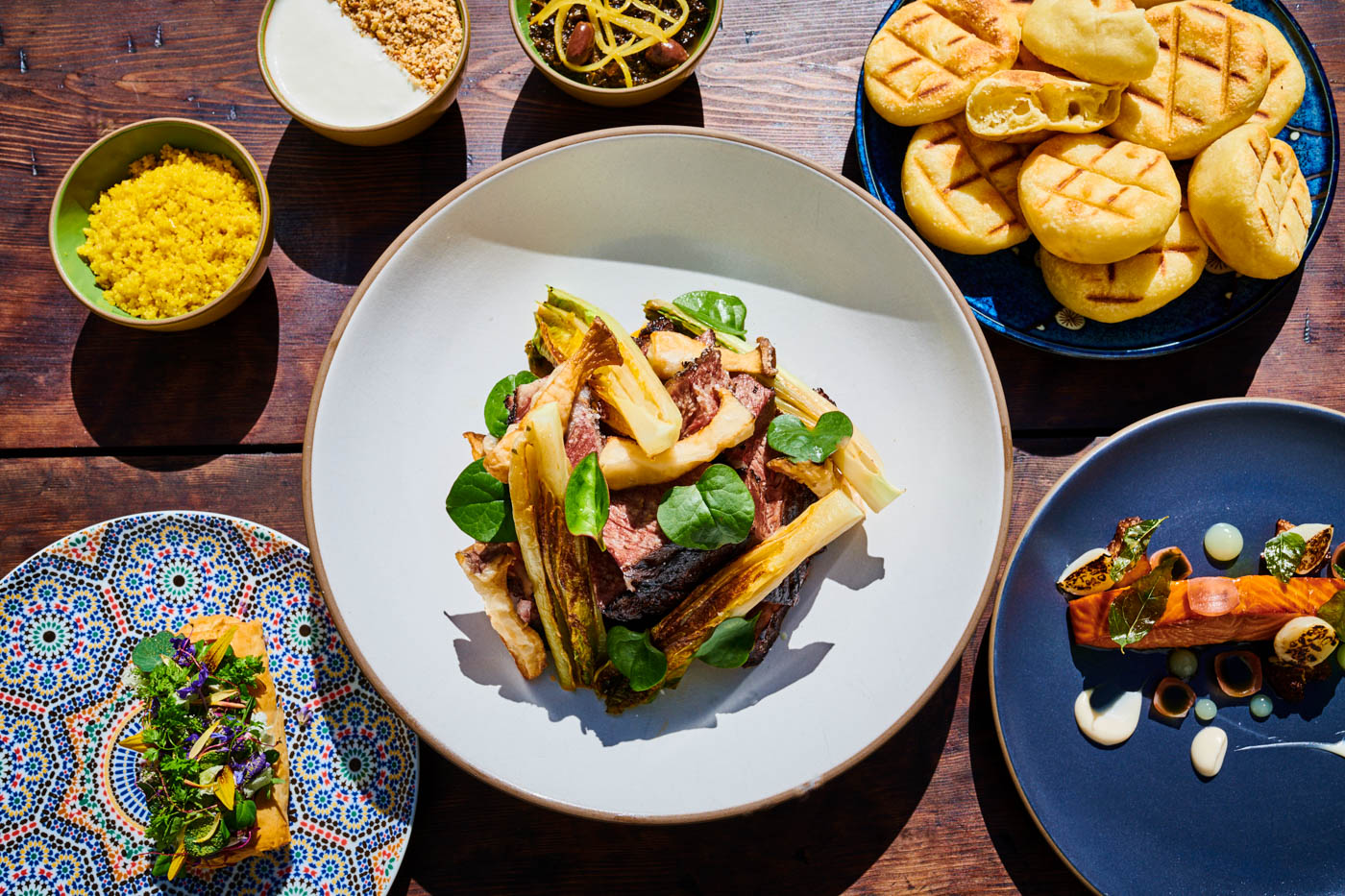
Perhaps most important to the development and spread of Moroccan food throughout the world is its unique geographic position. Placed at the intersection between Europe and Africa, Morocco has been a historical point of convergence for many cultures, including Romans, Arabs, Jews, Africans, Spanish and French populations.
“Since we have recorded history, Morocco has been a hub of migration, especially Marrakesh, which is a city of migrants,” explains Graf. Following Moroccan independence in 1956, many Moroccans moved to France, and in the decades that came after, Morocco has seen an influx of migrants from other parts of Africa who consider it a “stepping stone on their way to Europe,” but often never leave the country. Graf explains economic motivations remain one of the most common reasons that Moroccans choose to leave Morocco.
“Growing up in Morocco, you have two choices,” says Lahlou. “The first is to stay home and do what your family decides for you. The other is to pass your high school exam and then go to a French university.” His own decision to embark to America came as a not-so-welcome surprise to his family, but support from his grandfather and his own ambition transformed his dream into reality. While he never intended to pursue a career cooking Moroccan food, Lahlou suggests anyone interested in doing so must follow a path that travels into and out of Morocco.
“Moroccan cuisine is nostalgic cuisine. It’s focused on the past,” he observes. This can be beautiful because it reminds Moroccans of fond experiences and family memories, but it also means that Moroccan food can be “stagnant.”
“The American chef is allowed to explore, to go beyond physical boundaries,” Lahlou says, because Americans place a high value on new food experiences; while in Morocco, the best meals are typically the ones that are most familiar.
To many Moroccans, the most revered kind of chef is a dada—a home cook who works in the kitchens of affluent families in Morocco, often for several generations. The role of the dada is always fulfilled by a woman and is responsible in large part for the perpetuation of Moroccan food traditions, such as hand-rolling couscous, preserving lemons, and aging butter.
However, Moroccan food continues to industrialize, especially in Moroccan cities where people are more likely to buy preprocessed couscous than they are to crush the grains and roll it themselves. Bread, on the other hand, continues to be prepared fresh daily by many Moroccans who use shared mills to grind their grains and public ovens to bake their loaves. In the countryside, the persistence of subsistence farming means that numerous Moroccans also grow their own grains as well. For those who do not farm, Graf points out, “many people, no matter how poor, will try to source the grains from their hometown or native region—again, talking about beldi—because they associate the flavors with their past and their identity.”
Lahlou redefines beldi within the space of Mourad, drawing from his own past and identity to create a menu and an environment imbued with the spirit of the word. The ingredients and the techniques Lahlou use in the kitchen may be foreign in relation to the geographic confines of Morocco, but could not be classified as rumi. More than the preparation or presentation of any individual dish, it is Lahlou’s approach to flavor and to feeding people that exemplifies the essence of Moroccan cuisine.






Our comments section is for members only.
Join today to gain exclusive access.